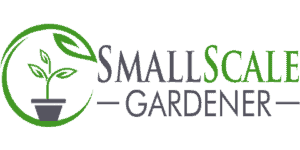Aeroponics and hydroponics are the latest and most efficient trends among innovative gardeners. It’s important to understand the differences and the similarities of aeroponics vs hydroponics, as well as the pros and cons of both techniques to help you pick the right one for your gardening needs.
The key difference between aeroponics and hydroponics is how the plants’ roots are positioned in each system. In both methods, plants grow without the conventional roots-in-soil setup. For hydroponics, the roots are more or less submerged into water, whereas aeroponics has the roots exposed to air and sprayed with a nutrient-packed mist.
That’s just the tip of the iceberg as the differences between aeroponics and hydroponics extend beyond the placement of the roots. The setup, water cycling, maintenance, and required resources are discussed in greater detail below.
The Best Growing System for Healthy Produce at Home
We’ve tried a lot of different growing systems and none have performed better than the Tower Garden vertical aeroponic system. It’s a simple and easy to use vertical garden for growing greens, tomatoes, cucumbers, strawberries and many other delicious and nutritious varieties of fruits and vegetables.
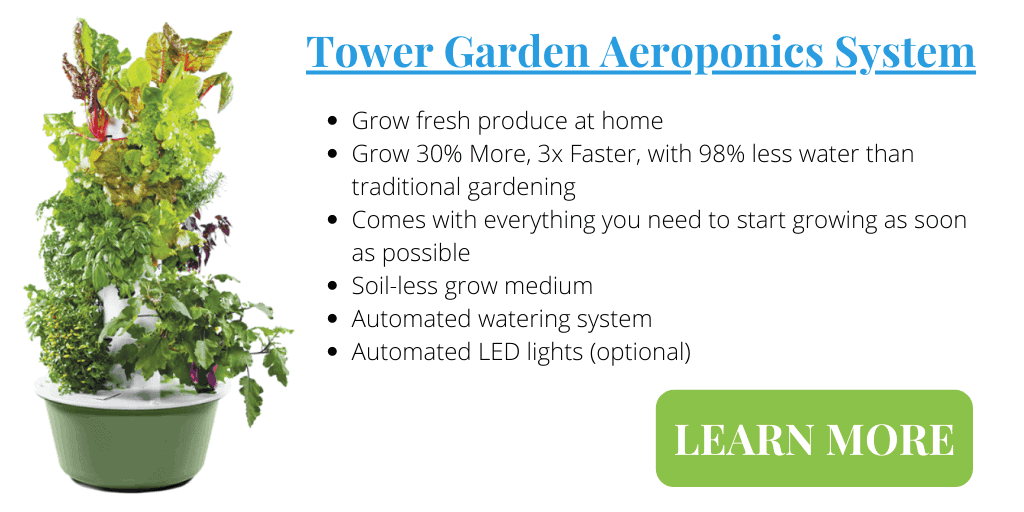
Aeroponics vs Hydroponics – The Roots
It’s common knowledge that plants absorb water and nutrients from the soil. However, this isn’t the case with aeroponics and hydroponics; both of these methods rely on alternative growing mediums for their plants other than the traditional soil route.
If you’re interested in plants and gardening, then you already know that the quality of the soil, aka the minerals within the soil, determines whether they’ll get the nutrients necessary for growth. The mineral composition continually changes as the plants take some out while depositing others back in, this is one of the main reasons for crop rotation on farms.
With the absence of soil as a growing medium, aeroponic and hydroponic systems consistently provide the ideal mix of nutrients via a liquid solution delivered directly to the roots. The mineral solution is mixed into the system’s water reservoir so the roots can easily absorb nutrient-packed water to promote healthy growth.
In aeroponic systems, as I mentioned above, the roots are exposed to air, hence the name “aero”. On the other hand, plants in hydroponic systems have their roots submerged into water, hence the term “hydro”. Let’s get into the differences in delivery systems between the two.
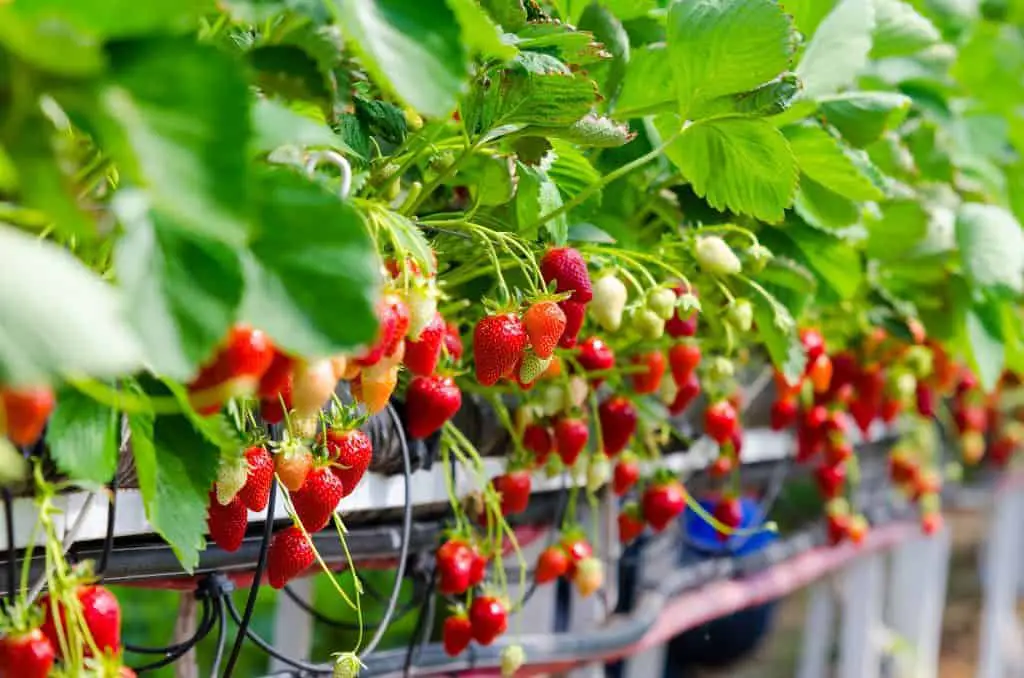
Aeroponic Delivery of Nutrients
There are two main types of aeroponic systems, high pressure and low pressure. High pressure systems are a bit more complicated while low pressure systems are a simplified version of aeroponics.
High Pressure Aeroponics
Despite being suspended in the air, high pressure aeroponics delivers nutrients to the roots via water in the form of a mist. Here, plants are grown in a fog-like environment with high humidity. Misting is done either in a continuous or timed pattern to supply the roots with nutrients and prevent them from drying out.
Low Pressure Aeroponics
In a low pressure system the roots are similarly housed in a highly humid cavity but rather than misting them, the water flows over them like a waterfall. This is done at specific intervals to allow plenty of time for the roots to remain in air with the water cycling over them for a short period every 10-15 minutes.
Hydroponic Delivery of Nutrients
As for hydroponics, nutrients are delivered through the water in which the roots are submerged. Oxygen is added into the water using an air stone or by allowing the water to fall back into the reservoir causing agitation and bubbling. Without oxygen to the roots the plants would suffocate and die.
Aeroponics vs Hydroponics – The Setup
There are many similarities between hydroponic and aeroponic systems mostly due to the fact that aeroponics is a type of hydroponic system. As mentioned above, both have different derivatives of themselves making for many variations of system setups.
Let’s take a closer look at the system designs and their setups so you can better understand how to spot the differences.
Aeroponics Setup
Aeroponic systems incorporate the use of net cups with or without some grow medium to support the plant at its base. A net cup is a plastic cup with large holes that hold the root ball but allow the roots to grow out and into the humid chamber.
The net cups are typically located in the top or sides of the grow chamber allowing the plant to grow upwards and the roots to grow down. The water is directed to all sides of the net cup to allow complete saturation of the entire root system.
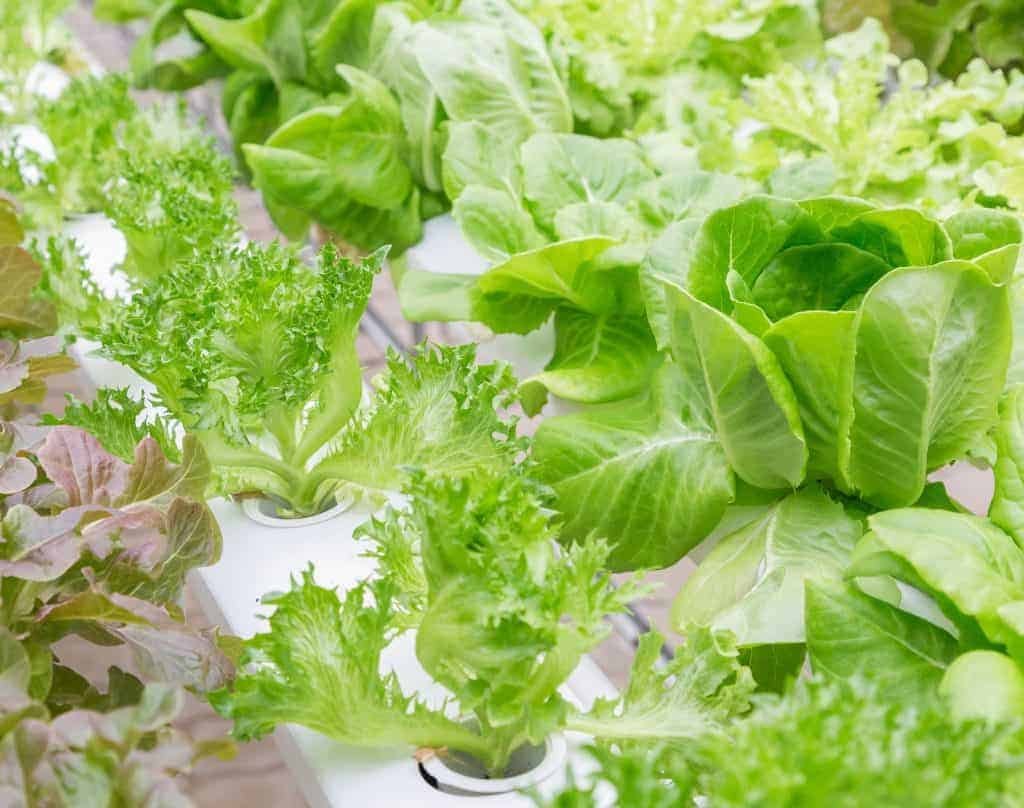
Grow Medium
Some aeroponic systems use a grow medium in the net pot while others do not. Common grow mediums include rockwool, vermiculite, coco coir and others. Some products absorb the nutrient solution and hold it close to the roots while others are non porous and loosely sit around the base of the plant to provide support and pockets for the roots to grow through.
Moving and Delivering Nutrients
A submersible pump located in the reservoir cycles the water and nutrient solution through the system to the roots where it feeds the plants before falling back into the reservoir. Because the nutrients are delivered directly where they’re needed the plant has to focus less on root growth and put more energy into growth.
In a high pressure system special misting nozzles are used to deliver a fine mist as opposed to large droplets. The nutrients are atomized to create a mist of highly oxygenated nutrient fog that’s ideal for absorption by the roots.
In a low pressure system the water flows over the roots leaving them moistened with nutrients before leaving them in oxygen to promote better absorption. This shares many similarities with both the ebb and flow as well as the nutrient film systems discussed below.
Hydroponics Setup
There are a couple different hydroponic growing techniques used by home and commercial growers. Each method includes some variation but they all follow the same water based nutrient concept
Ebb and Flow System
The ebb and flow system uses a rock type of medium that the plants are secured in. This type of system is done in a large tray or trough which gets flooded and drained repeatedly to provide the plants with both nutrients and oxygen.
For more detailed information on how the system works and some of its advantages check out our ebb and flow hydroponic system article here
Nutrient Film Technique
The nutrient film technique is usually done in a long and narrow trough-like container with a slight slope from one end to the other. Water is pumped up to the high side and uses gravity to slowly migrate down to the low side as a thin film.
As the water flows downhill it contacts the bottom of the roots providing them with the nutrients they need. The water flows out the low end of the trough back into the reservoir to be recycled through the system.
You can find out more details on the operation and advantages of the Nutrient Film Technique here
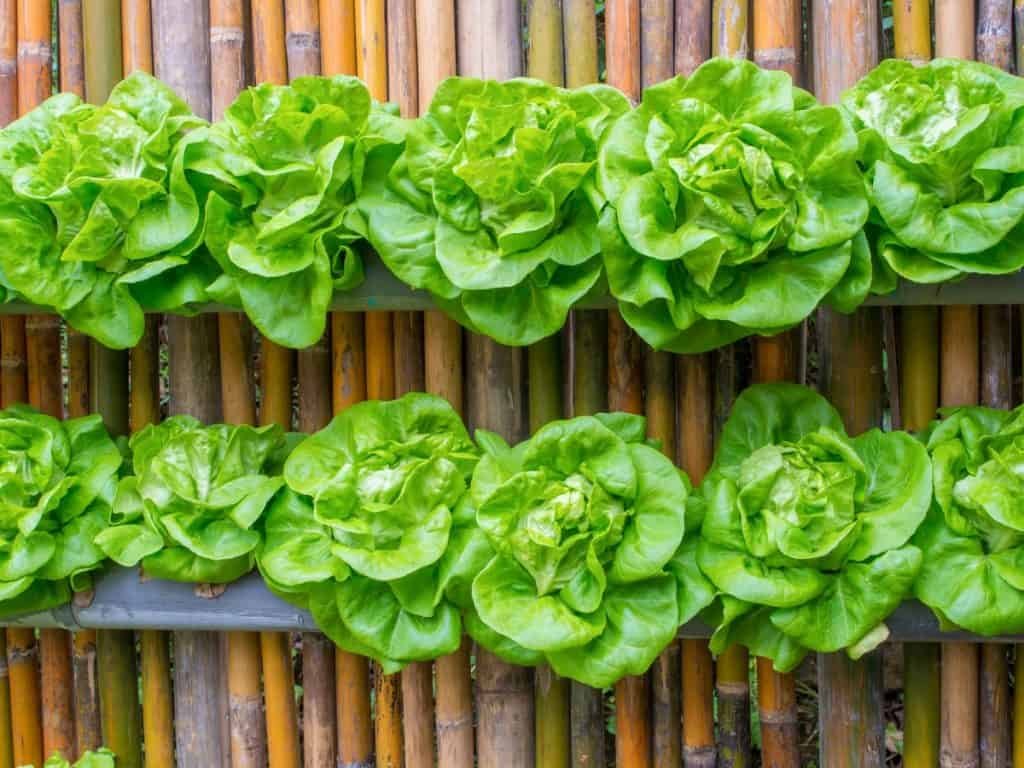
Deep Water Culture
The Deep Water Culture (DWC) system uses one or more reservoirs filled with nutrient solution that the roots get submerged in. Air is pumped into the reservoirs using an air stone to ensure the plant doesn’t get root rot and suffocate.
Deep water culture is a fairly safe system as the plants can survive in the nutrient solution for an extended period if the power goes out. This is different from many of the other systems that risk the roots drying out if the pump is non operational.
Check out our full article to get more information on the Deep Water Culture System here
Dutch Bucket System
A Dutch Bucket system uses a series of buckets with each housing its own plant. The bucket is full of small stones like perlite which hold and secure the plant base and roots during growth.
A water line at the top of the bucket supplies the water which percolates down through the stones feeding the roots along the way. A small pipe at the bottom of the bucket allows the water to drain out of the bucket.
The drain pipe of the bucket is usually a piece of ½ inch PVC which connects to a common return pipe for all of the buckets in the system returning the water to the reservoir to be recycled.
Maintenance
System maintenance is one of the most critical factors when it comes to growing healthy plants. Overlooking this aspect is a common rookie mistake that manifests its consequences when it’s already too late to correct issues.
To avoid such a scenario, performing regular system maintenance is a must whether you choose to go for an aeroponic or hydroponic system. This includes the following tasks:
- Regular PH testing of the water’s alkaline or acidic levels.
- Cleaning the various components of your system. Including the delivery system, reservoir and plant housing.
- Changing the growing medium.
- Maintaining water and nutrient levels.
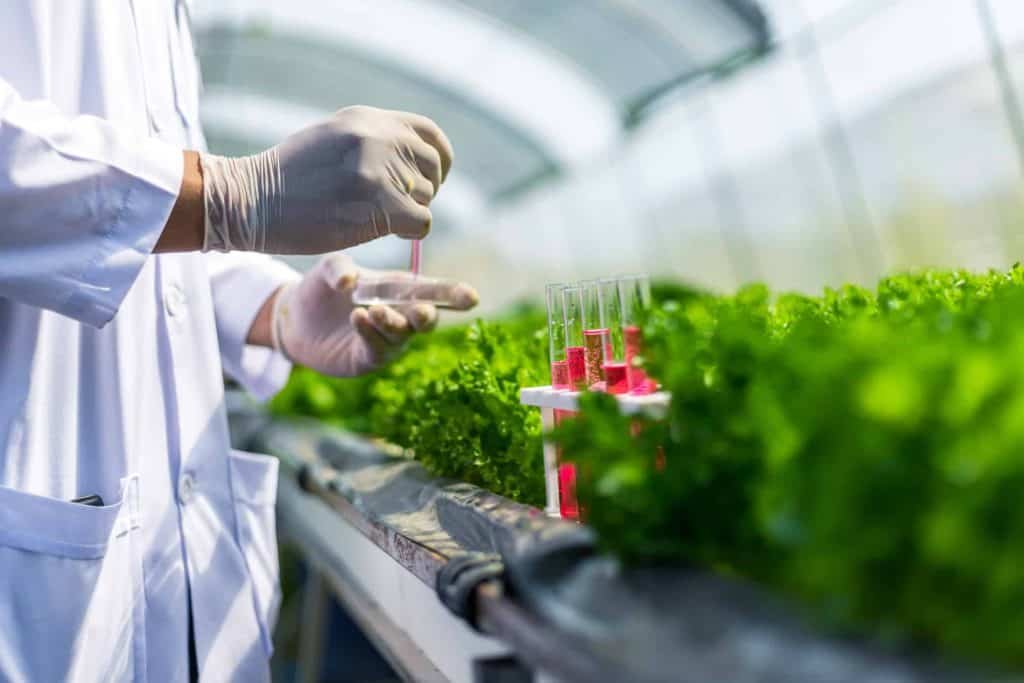
As you can tell, each system comes with its own set of aspects that demand maintenance. The answer to “what are these aspects?” depends on your choice:
- Aeroponics: your main concern in this system is preserving the pH levels of water and the concentration of the nutrient solution.
Due to their constant delivery of mist, aeroponic systems usually encounter fluctuations in the levels of pH and nutrient solution. This means you’ll have to test your solution more frequently to make sure that everything is within an acceptable range.
Over time, you won’t have to do these tests as often, however, the frequency will still be higher than in hydroponics. This means testing your solution several times per week.
Moreover, if your aeroponic system is on the newer side, you need to take the time to frequently check the roots for signs of drying out. If the roots do look dry or withered, it’s an indication of faulty spraying cycles that you need to tweak.
Additionally, the nozzles that supply the mist in aeroponics require special care since they’re prone to becoming clogged because of mineral deposits or scaling. Clogged nozzles are incapable of spraying the required mist, which can kill your plants if you don’t discover the clog early on. In this case, regular cleaning will eliminate the issue.
- Hydroponics: here, your top priority is to perform routine top offs and water changes. When the level of water in the reservoir gets low, you’ll need to add more water. You’ll also have to do complete water cycling once every few weeks.
Another aspect you should check is the pH and nutrient levels. The evaporation of water causes an increase in the concentration of chemicals within the nutrient solution. To make sure the plants aren’t overwhelmed, it’s your job to test the water regularly.
The frequency of testing will drop down to a couple of times per week once your hydroponic system is well established. However, you’ll still need to regularly clean and inspect components such as the water reservoir, the pumps, and the water lines.
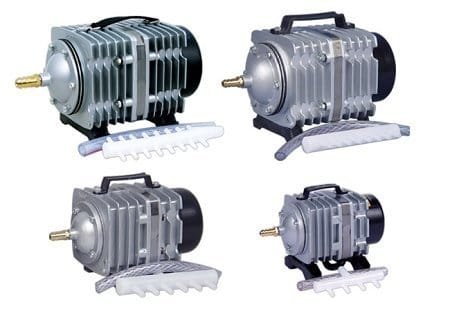
Pumps
As I mentioned above, pumps are an integral part of both aeroponics and hydroponics setups. While the presence of pumps in both systems is a point of similarity, they’re actually measured differently in each one.
To better understand this, let’s back up a bit. If you’re shopping for pumps for a home setup, you’ll quickly notice many abbreviations floating around, namely GPH and PSI. These abbreviations are units used to express how much water your pump will push through the system.
- In aeroponics, pumps are typically graded in PSI, which stands for pounds per square inch – a unit that measures the amount of pressure applied.
The reason for using this unit is because water doesn’t “flow” through aeroponic systems, but rather moves under pressure to come out in the form of mist. So it makes sense to use a unit that describes quantity in terms of pressure.
Factoring in both the nozzle type and the amount of PSI the pump can deliver, you can figure out the droplet size. The most common droplet sizes featured in household aeroponics range between 30 to 80 microns.
- In hydroponics, pumps are normally graded in GPH, which is short for gallons per hour – a unit that refers to how much water will travel through your system in one cycle of time.
However, in larger systems where inline pumps are used, the grading is more likely to be in HP (horsepower).
For more information check out our complete article on the Best Hydroponic Pumps here
Resource and Water Usage
Being more efficient and less resource-intensive is one of the biggest advantages that both aeroponics and hydroponics have over conventional soil gardening.
But because of their differences in nutrient delivery, maintenance, and power demands, these systems also differ in the amounts of resources they consume.
Aeroponics
By feeding the plants with a mist, very little liquid is needed for the system to operate. Some setups require more misting at more frequent intervals, but even then, aeroponics has lower water usage than hydroponics.
This also reduces the amount of nutrients consumed because the efficiency of absorption by the plant is greatly increased. The cycling on and off of the water pump saves energy use as well.
Hydroponics
These methods use larger quantities of water to maintain its water cycles. However, water waste is still kept to a minimum thanks to the recycling of unused water.
This means that a setup having 50 gallons of water cycling through the system, won’t consume it all within a single cycle. That being said, hydroponics still has a higher water usage than aeroponic systems.
To put simply, think of aeroponics and hydroponics like a shower vs bath situation. Aeroponics is the shower that uses less water over less time compared to a bath (hydroponics).
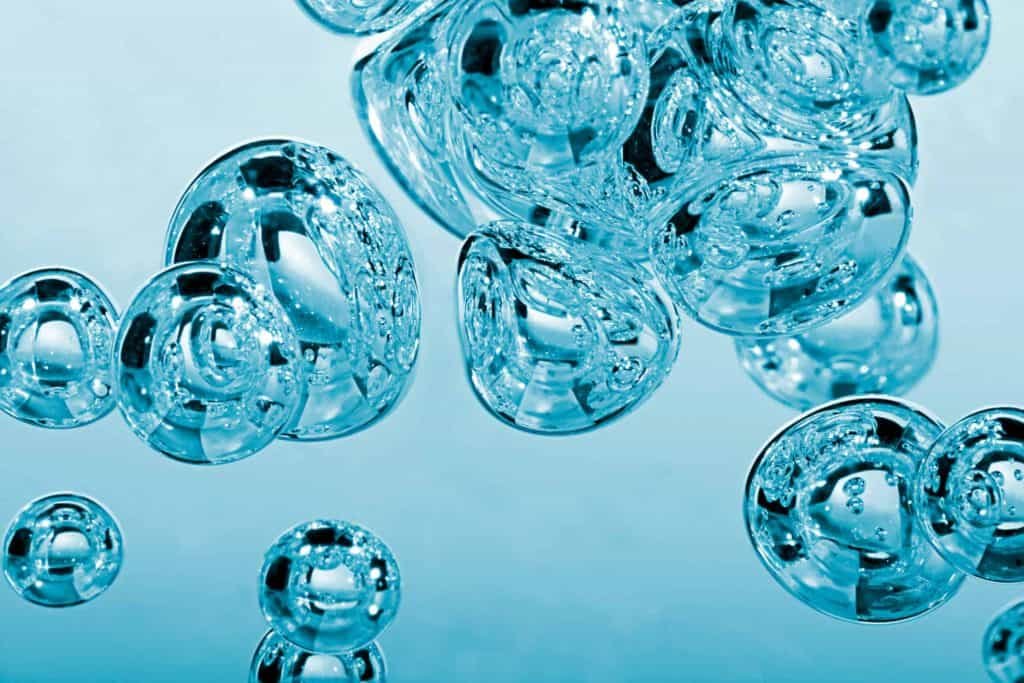
Aeroponics vs Hydroponics – Water Cycling
Timed water cycling is a method used to control how nutrients reach the plants in both aeroponic and hydroponic systems. This cycling doesn’t occur in the same way in either setup, so here’s how both systems cycle:
Aeroponic Water Cycling
Low-pressure aeroponic systems (LPA) will run the water pump in cycles spanning 15 – 20 minutes. Examples of this continuous cycling generally follow:
- 3 mins on/ 12 mins off
- 5 mins on/ 10 mins off
High-pressure aeroponic systems (HPA) cycle in much shorter 5 minute durations. The goal of cycling faster is to prevent small droplets from forming larger ones, which render the absorption of nutrients much harder for the roots. Common misting cycles in HPA systems include:
- 5 secs on/ 5 mins off
- 5 secs on/ 3 mins off
Hydroponic Water Cycling
The duration of water cycles in ebb and flow hydroponic systems is calculated by measuring the time it takes for the grow tray to fill with water and then gradually drain. This will depend on the size of the grow tray and the GPH rating of the water pump.
Other systems like the dutch bucket, thin film technique and drip systems will have different cycle times that are typically longer in duration.
The purpose of cycling in hydroponics is to ensure that the plants have enough time to effectively absorb the needed nutrients. At the same time, the rotation of the water helps provide the roots with oxygen.
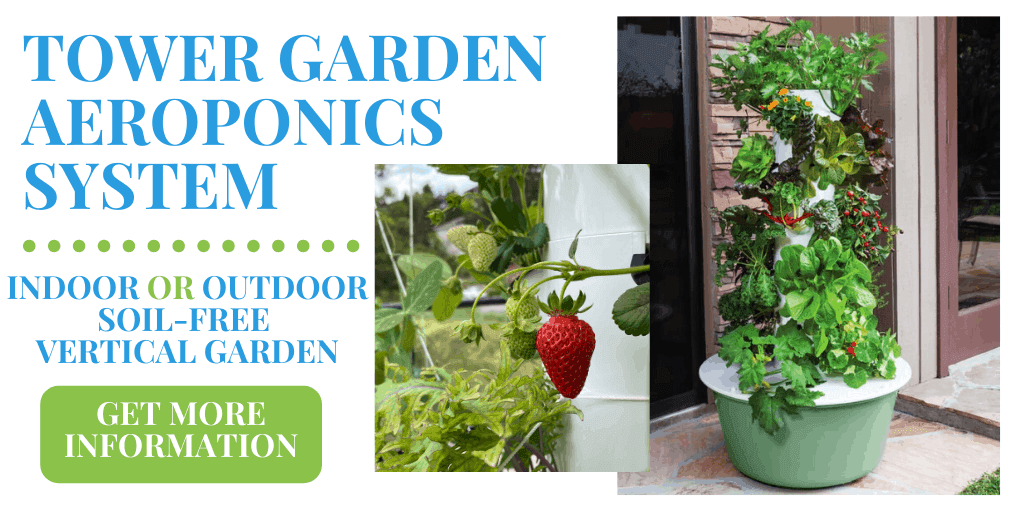
Aeroponics vs Hydroponics – Which One is Better?
After reading about all the differences and similarities of aeroponics vs hydroponics, you’re probably trying to decide which one is better for you to use. To give you an objective answer, I decided to compare the most evident pros and cons of each system.
Aeroponics – Pros & Cons
Pros
- Better nutrient absorption: since the roots in aeroponics are suspended in an oxygen rich humid environment, nutrient absorption is notably better.
- High efficiency: there’s almost no wastage of nutrients or fertilizer because the plants will absorb nearly everything sprayed at them.
- Higher yields: plants don’t have to compete for nutrients (unlike in hydroponics), which results in faster growth rates and higher yields.
- Reduced shock and stress: the consistent delivery of nutrients provides the plants with everything they need to grow, reducing the stress of searching for nutrients. The shock of transplanting is also eliminated because the roots are’t combined in a soil or heavy medium.
Cons
- Dependent on electricity: Aeroponic systems are highly dependent on the pumps operating at regular intervals or the roots can dry out and die in a matter of hours.
- High setup cost: aeroponics requires various components to function properly such as fine spray nozzles, pumps, timers, and automation tools. This significantly raises the initial cost of the system despite its simple look.
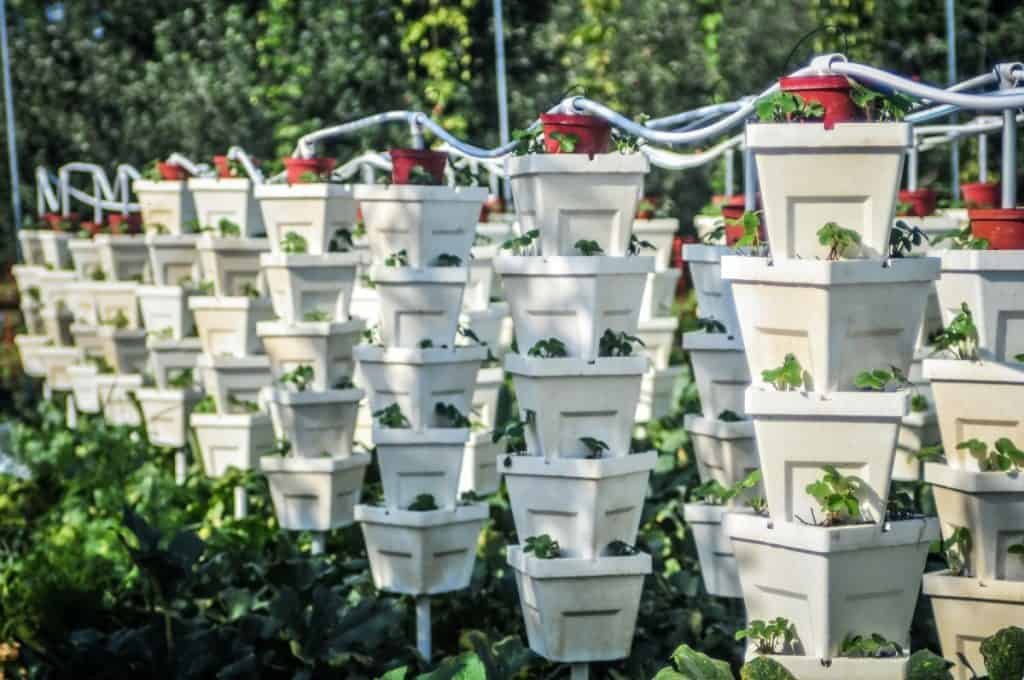
Hydroponics – Pros & Cons
Pros
- Better nutritional control: hydroponics allow you to better regulate how much nutrients your plants get and when it happens compared to soil gardening.
This will make you more in control of the growth process, easily manipulating aspects like the size of the plants and their speed of growth.
- Minimal water waste: most modern hydroponic setups are highly water-efficient. They recycle water to minimize waste, using less than 10% of the water that’s typically used in traditional soil farming.
- Flexibility: There are many different types of hydroponic systems to suit your space and the plants you like to grow.
Cons
- Diseases spread quickly: since all the plants’ roots share the same reservoir and solution, water-borne diseases are able to spread easily among them.
In aeroponics, this is less likely because the roots are suspended where each plant receives its own spray of water and nutrients.
- Poor aeration: since the roots are submerged into the water, hydroponic systems lack proper aeration.
Wrap Up
As you’ve seen, there are many similarities and differences between aeroponics and hydroponics systems. Both are viable solutions for growing your own food at home.
If you’re a beginner looking for a system to use at home we strongly suggest the Tower Garden vertical aeroponic system since it’s simple and easy to use and comes with everything you need to start your growing adventure.
You can see more information on the Tower Garden growing system here
